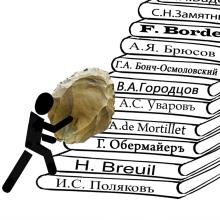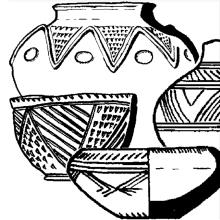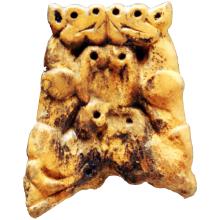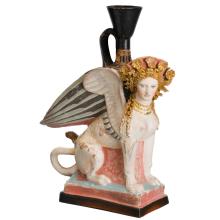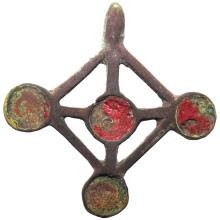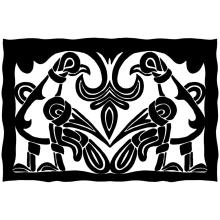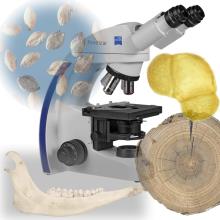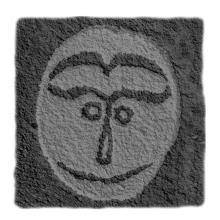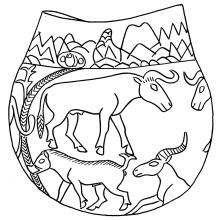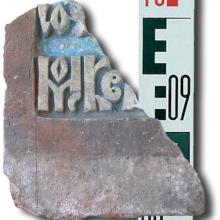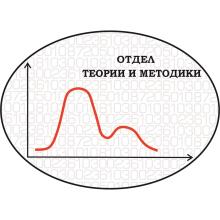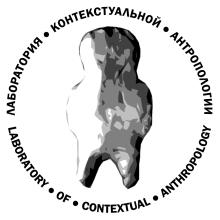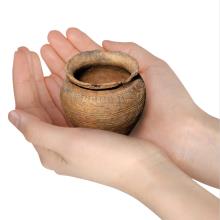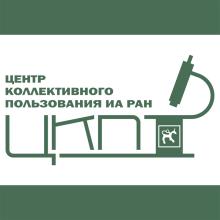The Technology of Ancient Wall-Paintings
Wall paintings are an integral part of architecture and as such they must be studied as a whole.
This is the Byzantine Church of S. Pietro at Otranto in Southern Italy, dated to the 10th-11th century AD.
The church had been conceived as completely painted. In the same way, the frescoes were adapted to the architectural part, therefore we cannot study one part separating it from the other, they are an ensemble. The analysis of the paintings can give additional information on the building, on the art of the period and on how people saw it.
In the study of the technology of frescoes using the right technical terms is very important, therefore I want to discuss the most important terms right away.
Support: the structure carrying the painting, a brick wall, raw rock, cut rock, a stone wall, mixed structures etc. This depends on the region and the tradition. For instance in Russia we have brick buildings, in some places in Greece and Italy churches have even been built in caves.
Substrate: mostly consists of two layers
1) arriccio (mortars of various kinds)
2) intonaco (finer layer of slaked lime)
In some cases, there is a thin third preparation layer that can be fine slaked lime, gipsum or clay. Real frescoes must be on slaked lime. If there is no lime as support the painting is a secco.
In the case of a secco painting various mixtures have been employed.
Rough stone wall: on a very rough support like this one, made of brick fragments and stones, a lower layer was necessary to even out the surface under the arriccio.
This layer is called “rinzaffo”.
In this case slaked lime mixed with coarse sand and pozzolana fragments was applied.
As in Russia brick walls are used, such a layer was not necessary.
Pozzolana is a vulcanic stone found in Latium and Campania, widely employed in Roman times Vitruvius Pollio mentions it in his book De Architectura II, VI, as material for hydraulic malta.
Pozzolana –type materials are found not only in Southern Italy, but in various other places too for example:
In Greece (Santorini)
In Germany: Trass from Rhineland and Bavaria
In Romania: for example, at Iasi
In the Northern Caucasus (city of Nal'chik) and in Crimea (Mount Karadag)
It will be interesting to see if this material had been used in Russia too.
There are different kinds of substrates already since the Bronze Age. For instance, at the same time gypsum was used as substrate in Egypt, but in Crete the fresco technique was employed.
In the “a fresco” technique the «arriccio» consisted of slaked lime mixed with sand, quartz, crushed bricks etc.
Generally, the arriccio was prepared with coarse sand and the intonaco with much finer sand.
But there are many more possibilities with the addition of straw, animal hair, hemp etc.
The arriccio could also be prepared in special ways, as we see for example here. This is a wall in the House of Orpheus at Paphos, on the island of Cyprus. To achieve a better adhesion to the support the arriccio was incised with a herringbone pattern, but of course it could have been any other kind of roughening of the surface.
We can find out about the composition of the substrates with (destructive) thin sections.
This is an example of Malta from the Roman Thermae at Fiesole, dated to the 1st century AD. (From a study of Fratini, CNR)
The samples for thin sections can also be very small, 3 mm2 can be enough for our study, if the material is rather homogeneous. In the case of rough mortars 2-3 cm2 are needed.
I am showing some Roman examples of thin sections of mortars (or arriccio).
The example from Pompeii contains volcanic rocks.
The one from Fiesulae contains cocciopesto, i.e. clay fragments.
The example from Mutina (Modena) shows again a different structure: In this case the lime preparation was mixed with older, recycled malta fragments, which represent an excellent material to render the malta more substantial.
Intonaco, i.e. upper preparation layer or layers. There are many different possibilities with intonaco as well. For instance, this Roman example clearly shows the arriccio layer, the intonaco with less inclusions then the arriccio and a thin layer of the so-called »lime milk».
Lime milk or lime water is a saturated aqueous solution of calcium hydroxide, i.e. slaked lime Ca(OH)2 , that was often employed as a finishing layer, but also as white pigment.
This detail of a fresco at Herculaneum is made with lime milk. In many cases the background was fresco painting, but the details were pigments mixed with lime milk added on the already dried fresco.
This is the general formula for frescoes: Slaked lime exposed to carbon dioxide forms calcium carbonate while the water present in the mixture evaporates.
Ca(OH)2 + Co2 = CaCO3 + H2O
slaked lime (calcium hydroxide) + carbon dioxide -> calcium carbonate + water (evaporates)
Slaked lime is produced in this way:
Caustic quicklime is produced by burning limestone, marble or other stones containing calcium carbonate (CaCO3) at 950-980 °C
Carbon dioxide (CO2) is freed and leaves quicklime
Quicklime mixed with water becomes slaked lime
The preparation is slow and takes a couple of months.
The surface hardens first.
To avoid incomplete cristallization the intonaco must be applied in layers.
Slaked lime that had to be used for frescoes had to «rest» for at least 6 months to obtain a complete hydratation.
In Roman times it was left in large tubs for 3 years.
In Roman times pozzolana was one of the additions. This natural stone containing silica in presence of water forms cementing compounds. The crystalline structure locks in the pigments.
Adding the right quantity of water in the various phases of preparation is very important.
The water must be clean and without organic substances. If the intonaco is mixed with too much water, it becomes porous and is not resistant enough.
Too much water produces voids inside the intonaco and a crust on the surface.
It is very important to understand that the pigments are NOT absorbed by the intonaco, but it is the Ca(OH)2 (slaked lime) present in the intonaco that migrates to the surface when the water evaporates. There, it englobes the pigments and turns to CaCO3.In this way the pigments are locked in the superficial layer of the fresco.
Under the pigment layer there is often a thin preparation layer called intonachino. When the so-called intonachino is present it is often a mixture of slaked lime, fine sand and marble powder. However, there are many variations and regional differences.
In many cases the intonachino is coloured or there is a colored layer between pigment and intonachino. The colored layers (mostly pink and yellow) might have had a technical function,
for example, protection from humidity, color enhancement or color modification were suggested. The function of these colored layers is not well studied yet.
In Roman times, but also later, the wall paintings were applied in «pontate» (used from the Roman period until at least the 13th century AD). This means that the intonaco was applied in large bands or strips of about man’s height (scaffolding) and this was the work of one day.
Example of pontate in the House of Julius Polibius at Pompeii.
The Byzantine technique comes from the Roman tradition, but
-
the substrate (or substrates) is/are thicker
-
the proportions were defined in advance
-
there were preparatory drawings
-
paint first on background and full areas, more color contrast
-
lines, details, highlights and shades were added at the end
Byzantine intonaco normally contains less sand, but more organic materials like straw, chaff, husks, hemp, or animal hair. The thickness of the intonaco is due to the use of brick-walls.
Nektar and Denis de Fourna describe a mixture of lime with straw for the arriccio and lime and oakum of linen for the intonaco. The figures outlines had to be polished before the paint application.
Byzantine figures are hieratic, flat, with almost only frontal views and no foot line.
- The halos were drawn with a compass first
- The iconography was strictly determined
- Rectangular areas (pontate) were drawn in Serbia, Cyprus and Moldavia
As an example: Pontate from the church of Morača, near Studenica in Serbia, 13th century CE.
Pigments were of various types.
- Mineral pigments: oxides, carbonates, sulphides, sulphates
- Artificial mineral pigments: for example, Egyptian blue, artificial cinnabar etc.
- Organic pigments, animal (example: purple, kermes etc.) and vegetable (madder, reseda etc.)
- Mixed pigments
Ideally pigments for fresco painting should be stable, i.e.: resistant to water, air and light, and free of acidic components, both organic and inorganic.
In reality a range of unstable pigments was also used for frescoes at different times and in different places.
HOWEVER, there are very few proper analyses, and we don’t know that much, not even on Roman frescoes. For example, we don’t know how «a secco» details were added, which mixtures were employed or how the surface was polished.
Stable mineral pigments are for example: lime, kaolin (white), ochre (yellow and red), sienna (red or brown), caput mortuum (dark brown); green earth, malachite (green); lapislazuli (lazurite or oltremare - blue), umbra (grey-brown).
Unstable mineral pigments: lead white (turns to brown), minium (turns to brown), azurite (+ H2O turns to malachite; + S turns to black), verdigris (+ H2O alters with whitish to pink crusts), cinnabar (+ H2O and sunlight turns to black).
White mineral pigments:
- Lime is the most common
- Calcium carbonate CaCO3
- Powdered marble CaCO3
- Gypsum CaSO4
- Caolinite Al2O3 . 2SiO2 . 2H2O
- Cerussite PbCO3
Black pigments:
- Wood charcoal C
- Lamp black, soot
- Ivory black (calcinated)
- Bone black
- Wine black
- Mixtures of CaCO3, Mn, Fe, clay
Example of Mn and Fe mixed with lime etc.: black wreath in the House of Aion at Paphos, Cyprus.
Yellow pigments:
- Yellow ochre, limonite FeO(OH)·n H2O)
- Orpiment, As2S2
- Massicot, PbO
Yellow ochre was used since prehistory. This pigment is quite common and stable. The color goes from light yellow to ochre/brown, but it becomes red when heated. Example from Pompeii.
Orpiment is an arsenic sulphide, As2S2, found in volcanic areas, here seen through the microscope.
The color goes from bright lemon yellow to orange. This pigment turns black in contact with copper-, lead- and tin- containing pigments.
Red pigments:
- Red ochre, hematite (bolo, Sinopia etc.) Fe2O3
- Cinnabar HgS
- Minium Pb3O4
Example of red ochre used for preliminary drawings: drawing of Buonamico Buffalmacco now at the Museum of Sinopie at Pisa.
Red ochre was employed for the preliminary drawings and was called “sinopia” from the town Sinope on the Northern Anatolia coast. It is found from early times until the XX century.
Example of fresco with sinopia drawing: Pantokrator, Absis der Church Nunziatella at Nunziata di Mascali, near Catania in Sicily, 12th century.
Preliminary drawings made with sinopia have been also found under mosaics, for example in the church of S. Lorenzo, 4th century AD, Milan.
The red pigment cinnabar turns black under the action of air, water and sun.
Pliny in his Naturalis Historia (33, 117-125), says that it had to be treated with wax as protection. The example comes from a villa at Castellammare di Stabiae.
The red pigment minium, Pb3O4, is unstable as well and blackens by strong light. Example from a villa at Pompeii. This pigment has an orangey-red color and was obtained by burning litharge, PbO. It is highly covering and has a glossy effect.
Green pigments:
- Green earth, K (Mg, Fe2+) (Fe3+Al)Si4O10(OH)
- Malachite, Cu2CO3 (OH)2
- Egyptian green: lime, quartz, Cu
- Mixtures of yellow and blue
Example: representation of the goddess Flora, Castellammare, Stabiae. Only three pigments have been used.
Green earth consists of powdered glauconite and celadonite. This pigment is very common and
was mixed with Egyptian blue, yellow ochre, organic black, lime white etc. to obtain different nuances. Example from Castellamare, Stabiae.
In Byzantine frescoes green earth was used for skin colors and shading.
Examples from Castelseprio (Italy) 830-950 AD and Lambach (Austria) 1089 AD.
An excellent example of shading with green comes from this fragment from the Church of the Annunciation at Gorodishche in Novgorod. From this technique comes the use of green earth as backing for human flesh in later times.
Example of the use of green earth in 1300 by Duccio di Buoninsegna.
The green pigment malachite is less stable than green earth, and more expensiv, therefore it is less used, but the color is quite striking. Beautiful example from the Carolingian Church of St. John at Müstair, Switzerland, 9th century AD.
Example by Spinello Aretino, ca. 1380, Church of Santa Trinità, Firenze.
Blue pigments:
Azurite = 2 CuCO3 Cu(OH)2
- Lapislazuli (Lazurite) = (Na,Ca)8(AlSiO4)6(S,SO4,Cl)
- Egyptian blue, CaCuSi4O10
- Calcium blue (quicklime blue)
Calcium blue was produced by mixing lime or quicklime and verdigris ((Cu2CO3(OH)2), copper chloride (Cu2(OH)3Cl) or copper sulfate CuSO4(H2O)x and became very common in the 18th century. Example of light blue wall at Herculaneum.
Azurite is unstable and turns to malachite in presence of H2O or humidity.
It becomes black if sulphur is present in the air (for example because of oil lamps or cars).
Example: Giotto, Cappella degli Scrovegni Padova, 1305.
Lapislazuli (lazurite or oltremare): The colour becomes lighter in contact with lime. It was seldom employed on early frescoes, because of its price. In Roman frescoes it is mostly found mixed with azurite to minimize the expenses.
Egyptian blue and green is an artificial pigment found since the Bronze Age in the Near East and Egypt, but very soon all over Europe.
Egyptian blue was made by heating to around 850–950 C° a mixture of calcium carbonate, a copper-containing compound (metal filings or malachite), silica sand and soda or potash as a flux.
In the Church of S. Saba in Rome, 8th century, Egyptian blue was identified on all frescoes of the church. There are also several evidences on Renaissance work.
Example from the Byzantine church of St. Panteleimon at Nerezi, Macedonia, 2nd half of 12th century. Here the painters lavishly employed Egyptian blue and green.
How do we identify the pigments?
- The first examination is done with an optical microscope
- XRF is a good way for the first screening of pigments
- The perfect tool is the SEM-EDS that shows layers and structures and allows the microanalysis of details
- The samples must be mounted in conductive resins and polished (shliff)
- XRD identifies the compounds employed as pigments
On wall paintings various pigments, mixtures and layering are possible.
Examples of Roman frescoes from Paphos, Cyprus:
Egyptian blue mixed
b) with white calcite
c)with purple Fe oxide (hematite)
d) with yellow ochre
e) with carbon black
c) green earth mixed with iron oxide (goethite) and manganese mixture
d) green earth and Egyptian blue
e) example of painting with these pigments
Study by Knuutinen et al. 2007, pigments at Pompeii:
A: single layer of blue pigment on intonaco.
B: red on top of blue layer gives the impression of purple.
C: Blue on green pigment layer gives the impression of turquoise.
Without mounting the samples in resin, it would not be possible to recognize the layers.
We have begun to work on the fragments of wall painting from the church of St. George at Novgorod. The quality of the paintings is exceptional and already the first data are extremely interesting. Now that you know everything about pigments you will better appreciate the next lecture on the frescoes of Novgorod.


